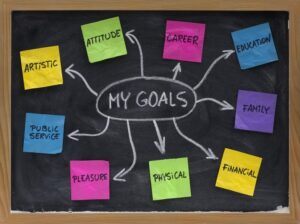Me, Myself, and I
The Self The self is our sense of personal identity, it is a mental picture that we have of ourselves based on a number…

The Self The self is our sense of personal identity, it is a mental picture that we have of ourselves based on a number…

Vision boards can be helpful for people who are looking to discover, clarify or focus on their future goals. Creating a visual representation of…

Have you heard about Mindful Movement? Mindful walking, running, swimming, biking, hiking and even pole dancing all exist. Jon Kabat-Zinn is the Founder and…

You’re writing your long list of New Year’s resolutions while checking emails for work while feeding the baby. Then the phone rings… We live…

When was the last time you anticipated life would go one way but instead it took an unexpected turn? In a moment, feelings of…

Our world can feel frenzied. Our minds can feel preoccupied with the many responsibilities and obligations. We may even find it difficult to turn…

Wired for Danger We have a natural tendency to focus on what goes wrong. Over thousands of years we have developed a built-in survival…
End of content
End of content
Life’s too short to stay stuck. Request an appointment now.
Would you like to get our monthly resources for mental wellness?
